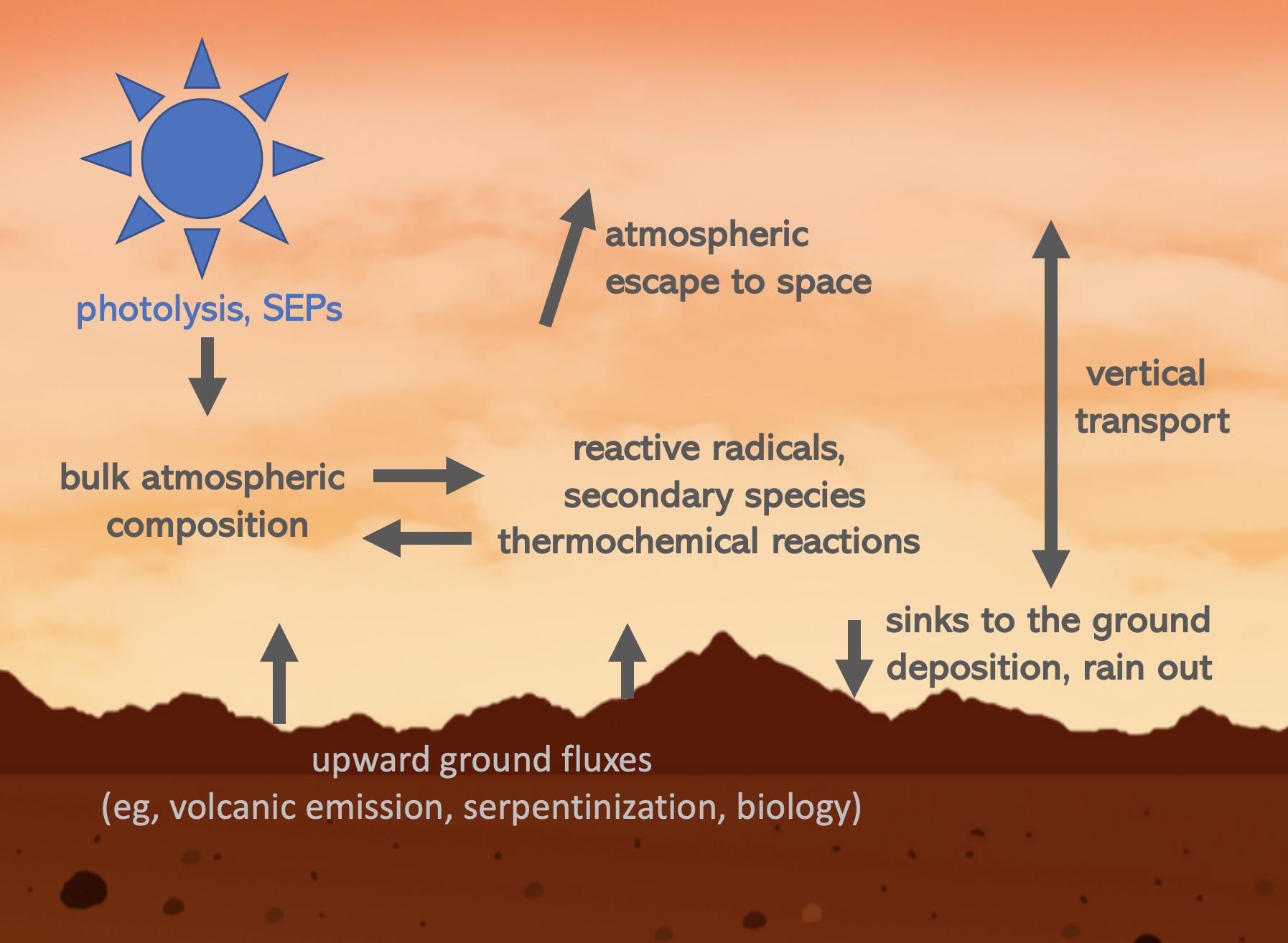Modeling Capabilities & Research Tools
KINETICS
The Caltech/JPL 1D Photochemical and Transport Model (KINETICS) solves for the steady state concentrations of chemical species in a planets’ atmosphere by considering thermochemical reactions between species, photolysis, vertical transport via diffusion and advection, and upward and downward fluxes of species from the upper and lower boundaries.
KINETICS was originally developed by Allen et al. (1981), and has since grown to host a library of over 1,000 species and 20,000 reactions. It has been applied extensively to the earth’s atmosphere, solar system worlds, and exoplanets.
I have applied KINETICS to examine atmospheric escape from the Mars atmosphere, nitrogen fixation in the early Mars atmosphere, organic synthesis in the Titan atmosphere, nitrogen chemistry of volcanic terrestrial systems, and hydrocarbons at exoplanets. I have also directly modified the source code and database to add reaction networks, isotope chemistry, modify rate constants, and consider new stellar flux grids.
CARMA
The Community Aerosol and Radiation Model for Atmospheres (CARMA) is a 1D microphysical model which solves for the binned size distribution of aerosol particles in a planetary atmosphere by calculating from first principles the rates of nucleation (homogeneous and heterogeneous), coagulation, condensation, evaporation, sedimentation, diffusion, and advection.
CARMA was originally developed by Turco et al. (1979) and Toon et al. (1979), and was later updated (eg., Jacobson et al., 1994, Ackerman et al., 1995), and recently generalized to planetary atmospheres (eg., Gao et al., 2017; Barth et al., 2020).
I have applied CARMA to examine photochemical hazes at Pluto and exoplanets and higher temperature condensates at hot Jupiters.
PICASO
The Planetary Intensity Code for Atmospheric Scattering Observations (PICASO) is the first open-source radiative transfer model for computing the reflected light of exoplanets at any phase geometry. PICASO was recently developed by Batalha et al. (2019), and this python program has heritage from a decades old, well-known Fortran model used for several studies of planetary objects within the Solar System and beyond.
I have applied PICASO to study the reflected light of hot Jupiters, transmission spectra of rocky exoplanets, and thermal spectrum of a brown dwarf.
VIRGA
Virga is an open-source, parametrized cloud model which solves for the presence and distribution of atmospheric condensates. The efficiency of this model makes it useful for retrievals as well as 3D applications. The model was recently developed by Rooney et al. (2021) and has heritage from a decades old Fortran model known as Eddysed (Ackerman & Marley, 2001).
I have applied Virga to study higher temperature condensates at hot Jupiters and a brown dwarf.
CEA
The NASA Computer program Chemical Equilibrium with Applications (CEA) calculates chemical equilibrium compositions and properties of complex mixtures. It comes from a long history of computer programs that have been developed at the NASA Lewis (now Glenn) Research Center since the 1950s. Associated with the program are independent databases with transport and thermodynamic properties of individual species, and over 2000 species are contained in the thermodynamic database.
I have applied CEA to study equilibrium chemistry in the presence of lightning and in terrestrial volcanic systems.

